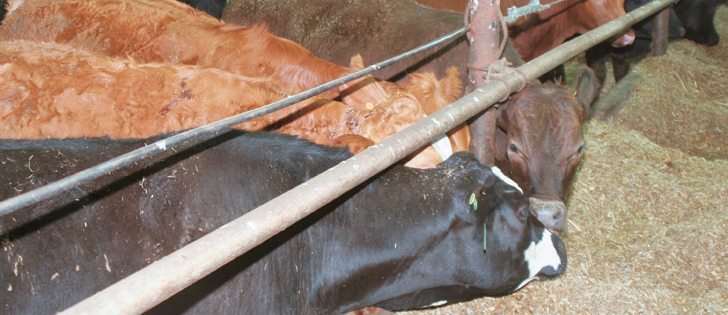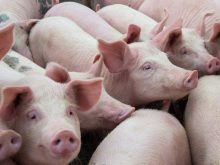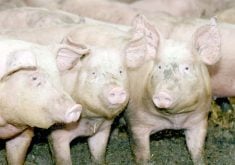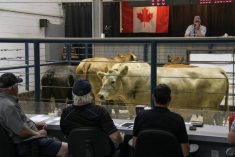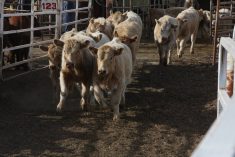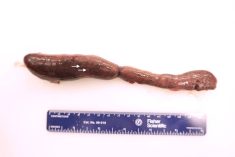P.E.I. beef producers provide potato growers with manure; potato growers’ rotations include hay and corn for livestock feed
KENSINGTON, P.E.I. — Raising cattle on the red fields and rolling green hills of Prince Edward Island may seem like another culture to western beef producers, but farmer attitudes are the same.
They watch the markets daily, they worry about increasing regulatory demands and they want to raise the best beef they can. They also worry about the future.
“We have guys who would like to expand, but they want to know where the beef industry is going,” said Ivan Johnson, P.E.I. director with the Canadian Cattlemen’s Association and past chair of the P.E.I. Cattle Producers Association.
Read Also
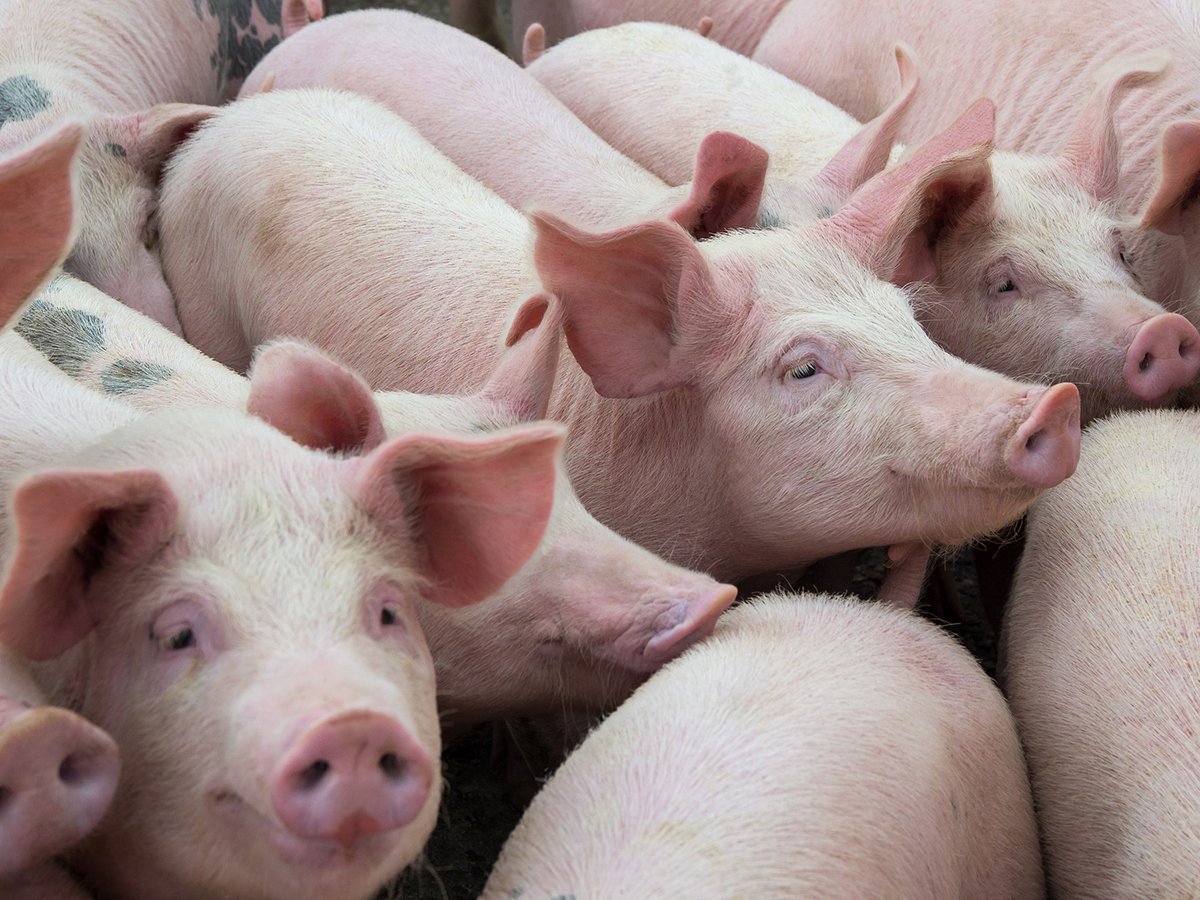
Quebec pork company calls for transparency around gene-edited pigs
Quebec-based pork company duBreton is calling for transparency around meats from gene-edited pigs on concerns that a lack of mandatory labelling will confuse consumers, and dilute certification claims. The organic sector is also calling for labelling rules.
The provincial organization has about 400 registered members who run 10,000 to 12,000 beef cows.
According to Canfax statistics, that is slightly more than one percent of the national herd.
The industry is predominately cow-calf with some small feedlots. The purebred industry is shrinking.
One advantage is a federal processing plant built in 2003 with support from Maritime beef producers and their respective governments. The plant has the capacity to process 500 head per week, but that has fallen to about half.
To rebuild business, the company offered a new certified brand as a joint initiative of the P.E.I. Culinary Alliance, the P.E.I. Cattle Producers Association, the Atlantic Beef Products plant and the provincial government.
Island Beef is sold throughout the region and can be found as far away as Toronto, where Dolan Foods handles the marketing.
Producers sign a licensing agreement to maintain a valid environmental farm plan certificate, attend a humane handling workshop and obtain optional certification under the verified beef program.
Cattle must be born and raised on a P.E.I. farm, be age verified and re-ceive a specific ration that includes adding vitamin E to the feed and no added antibiotics 100 days before slaughter. They need to grade AA or higher and dress out at 700 to 900 pounds.
It has turned out to be a good deal with a shared premium going to the processor, promoter, feedlot and cow-calf producers.
Environmental rules are strict for all farmers.
Cattle producers must fence off open waters to keep out animals to protect the water, as well as the fishery.
It was expensive, but the water quality and animal health improved, said Johnson, who is a cow-calf operator about 15 minutes from the town of Summerside.
“Most producers would tell you it was a pain in the ass to deal with, but personally I am glad I did it.”
It changed the landscape in a positive way and improved relations with the public.
In a province where farm chemical use is criticized, the beef sector actually receives less flack over manure than what is seen with pesticides.
“Our biggest concern public-wise is pesticide use, probably the most in the potato industry,” he said. “I think the beef industry is looked upon as very environmentally friendly.”
Co-operation is a given among P.E.I. farm sectors.
More than 90,000 acres are in potatoes and at least a three year rotation is required, which includes hay, cereals, soybeans and corn for grain and silage.
Beef producers can offer farmers manure for fertility and can also rent hayland when a field has been taken out of potatoes for a couple years.
“Here on the island, we need the cattle industry to be maintained to help the other industries,” Johnson said.
“If we lose the cattle industry, then where are you at?”
Kevin and Susan Simmons are examples of modern P.E.I. beef producers.
The owners of Wilson Farms at Kensington maintain 110 black Simmental and Angus cows and a 250 to 300 head feeding operation, which would be considered minuscule by prairie standards.
“We have used more Simmental than anything,” Kevin Simmons told a cattle producers’ tour Aug. 15.
“Charolais will actually work the best in the feedlot, but all around, the Simmental is the best for us. We like them for their mothering ability and their milk.”
A major difference in this part of the world is raising cattle indoors be-cause the climate is wet and muddy. The winters offer plenty of snow and wind chills are punishing.
The Simmons’ feedlot cattle are housed in a hip roof barn that is 70 by 100 feet wide with 20 foot wide sheds on the sides. The floors are concrete. The barn has large doors that are opened to air out the pens. Outdoor feeders full of hay are available during summer. They calve indoors in April and May and outdoors in August and September.
They finish their own steers and heifers and buy additional 600 pound feeders at a monthly auction market.
Cows are turned out at the end of May. By early June, they go to the community pasture and come back in September. By then, the farm’s 60 acres of pasture have regrown for fall grazing.
Simmons can also rent a resting potato field for $300 an acre to grow hay during the rotation period.
They once received potato byproducts from the nearby Cavendish french fry plant, but the company decided to build a biogas digester and keep its waste.
They farm 400 acres and make corn silage and cut hay for round bales. They buy most of their feed barley but added 45 acres this year as part of a crop rotation.
“If barley is under $200 a tonne, I (would) just as soon feed barley. With $150 tonne barley, I can make money,” Simmons said.
Their finishing ration puts on about three pounds per day.
“We can put 1,000 lb. on them in a year. The good ones will do it in 10 months,” Simmons said.
The cattle are shipped to Atlantic Beef Processors and often end up with 900 to 1,000 lb. carcasses. Simmons estimates 250,000 lb. of beef are sold off his farm each year.
He typically uses growth hormones for the feedlot cattle but joined the Island Beef program and separates a group for special feeding to earn a $40 per head premium.




